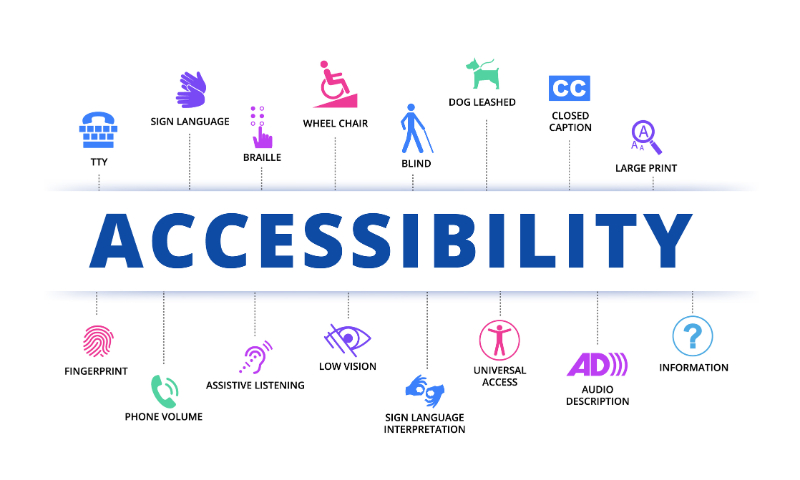
As the global population ages, the demand for age-friendly housing is increasing. This is particularly true for 55+ active adult communities, where the design of homes must cater to the evolving needs of older adults. Age-friendly design principles, accessibility features, and universal design concepts are crucial to ensuring these homes provide comfort, safety, and independence. This blog will delve into the importance of these design principles and features, exploring how they enhance the living experience for older adults in 55+ communities.
The Importance of Age-Friendly Design Principles
Demographic Shifts and Aging Population
The world is experiencing a significant demographic shift as the population ages. According to the United Nations, the number of people aged 60 and above is expected to double by 2050, reaching 2.1 billion. In the United States, the Baby Boomer generation (those born between 1946 and 1964) has been significantly increasing the demand for housing that accommodates their needs for more than a decade.
Enhancing Quality of Life
Age-friendly design principles prioritize the comfort, safety, and well-being of older adults. These principles consider the physical, sensory, and cognitive changes that come with aging, ensuring that homes are not only functional but also enjoyable to live in. By addressing these needs, age-friendly design can significantly enhance the quality of life for older adults, promoting independence and reducing the risk of accidents and injuries.
Promoting Independence and Aging in Place
One of the primary goals of age-friendly design is to support aging in place, allowing older adults to live independently in their homes for as long as possible. By incorporating features that accommodate mobility issues, sensory impairments, and other age-related changes, these designs empower older adults to maintain their independence and stay in familiar surroundings.
Economic Considerations
From an economic standpoint, age-friendly design can reduce healthcare costs by minimizing the risk of falls and other accidents that often lead to hospitalizations and long-term care. Moreover, homes designed with aging in mind can attract a broader market, including older adults who wish to downsize and those planning for their future needs.
Accessibility Features in 55+ Active Adult Homes
Single-Level Living
One of the most critical accessibility features in age-friendly homes is single-level living. Stairs can pose significant challenges and hazards for older adults, especially those with mobility issues. Single-story homes or homes with essential living spaces (such as the master bedroom, bathroom, kitchen, and living room) on the main floor eliminate the need to navigate stairs daily.
Wide Doorways and Hallways
Wider doorways and hallways are essential for accommodating wheelchairs, walkers, and other mobility aids. Standard doorways are often too narrow for these devices, making it difficult for individuals with mobility impairments to move freely within their homes. A minimum width of 36 inches for doorways and 42 inches for hallways is recommended to ensure easy access.
No-Step Entries
Entrances without steps are crucial for accessibility. Traditional homes often have steps leading to the front door, which can be a significant barrier for individuals with mobility issues. No-step entries, also known as zero-threshold entries, provide seamless access to the home, making it easier for older adults to enter and exit safely.
Accessible Bathrooms
Bathrooms are a common site for accidents in the home, particularly for older adults. Accessible bathrooms feature several key design elements:
- Walk-In Showers: Replacing traditional bathtubs with walk-in showers eliminates the need to step over a high tub edge. These showers should include built-in benches and handheld showerheads for added convenience.
- Grab Bars: Strategically placed grab bars in showers, near toilets, and by bathtubs provide essential support and stability, reducing the risk of falls.
- Raised Toilets: Higher toilets are easier for older adults to use, reducing the strain on their knees and joints when sitting down and standing up.
Adjustable Countertops and Cabinets
Adjustable or varied-height countertops and cabinets in kitchens and bathrooms make it easier for older adults to reach and use these spaces comfortably. Lower counters and pull-out shelves can accommodate individuals who use wheelchairs or have limited reach, promoting independence in daily activities.
Lever Handles and Rocker Switches
Traditional door knobs and light switches can be difficult for individuals with arthritis or limited hand strength to operate. Lever handles and rocker switches require less force and dexterity, making them more accessible for older adults.
Non-Slip Flooring
Falls are a significant concern for older adults, and slippery floors can increase this risk. Non-slip flooring materials, such as textured tiles or slip-resistant vinyl, provide better traction and reduce the likelihood of falls.
What is Universal Design?
Universal design is the concept of creating environments that are inherently accessible to all people, regardless of age, disability, or other factors. Unlike accessible design, which often involves making adaptations to meet specific needs, universal design aims to create spaces that are usable by everyone from the outset.
The concept is hardly new. In 1989, the Center for Universal Design was launched at North Carolina State University with the hope of expanding housing and workplace opportunities for the physically impaired. By 1997 a group of architects, engineers, product design specialists and environmental design researchers with funding from The Department of Education’s National Institute on Disability and Rehabilitation Research had developed a list of seven core principles that together came to define the term:
- Equitable Use: The design can be used by people of differing sizes and abilities.
- Flexibility in Use: The design takes into account that people can be either right or left handed and approach and need some flexibility in methods of use.
- Simple and Intuitive Use: Use of the design is easy to understand, regardless of education level or language skills.
- Perceptible Information: The design communicates necessary information to the user through pictures as well as verbal and tactile cues..
- Tolerance for Error: The design minimizes danger to the user, including hazards that could be the result of accidental or unintended actions.
- Low Physical Effort: The design can be used with a minimum of effort without repetitive actions.
- Size and Space for Approach and Use: The design allows for different levels of mobility and posture while allowing sufficient space for the use of assistance devices or personal assistants/. (https://design.ncsu.edu/research/center-for-universal-design/)
Applying Universal Design in 55+ Communities
Universal design principles can be seamlessly integrated into the homes and common areas of 55+ communities to create environments that are inclusive, safe, and comfortable for all residents.
Open Floor Plans
Open floor plans with clear sightlines and ample space for movement are a hallmark of universal design. These layouts make it easier for residents to navigate their homes and reduce the risk of collisions and falls. They also allow for more flexible use of space, accommodating various furniture arrangements and mobility aids.
Multifunctional Spaces
Designing multifunctional spaces that can serve various purposes over time is a key aspect of universal design. For instance, a den that can be easily converted into a bedroom or a home office that can double as a guest room ensures that the home can adapt to changing needs and lifestyles.
Adaptable Fixtures and Fittings
Fixtures and fittings that can be adjusted or adapted over time are essential for universal design. This includes adjustable-height countertops, removable base cabinets, and modular shelving systems. These features allow the home to evolve with the resident’s needs without requiring major renovations.
Enhanced Lighting
Good lighting is crucial for all homes, but it is especially important in age-friendly and universally designed spaces. Enhanced lighting, including ample natural light, task lighting, and adjustable light levels, helps improve visibility and reduces the risk of falls. Additionally, contrasting colors and textures can aid those with visual impairments by clearly delineating different areas and surfaces.
Technology Integration
Integrating smart home technology can greatly enhance the accessibility and convenience of homes for older adults. Voice-activated systems, automated lighting, smart thermostats, and security systems can all contribute to a safer and more comfortable living environment. These technologies allow residents to control various aspects of their home with minimal physical effort, accommodating a wide range of abilities.
The Future of Age-Friendly and Universally Designed Homes
Innovation in Design
As the demand for age-friendly and universally designed homes grows, innovation in design is likely to follow. Architects and designers are continually developing new materials, technologies, and design approaches to create more inclusive and adaptable living environments. This includes advances in modular construction, adaptive reuse of existing buildings, and the integration of cutting-edge assistive technologies.
Policy and Advocacy
Government policies and advocacy efforts have and will continue to play a crucial role in pushing for greater investment in age-friendly housing. promoting age-friendly and universal design. Building codes and regulations that mandate accessibility features will be pivotal in driving wider adoption of Universal Design principles.
Community Engagement
Engaging older adults in the design process is essential for creating homes that truly meet their needs. Participatory design approaches, where residents provide input and feedback on design elements, can lead to more effective and satisfying outcomes. This engagement ensures that the voices of those who will live in these spaces are heard and considered.
Education and Training
Educating architects, designers, and builders about age-friendly and universal design is also critical for widespread adoption. Training programs and professional development opportunities can equip industry professionals with the knowledge and skills needed to implement these principles effectively. Additionally, educating the public about the benefits of age-friendly design can drive demand and support for such initiatives.
Age-friendly design principles, accessibility features, and universal design concepts are essential for creating homes that cater to the needs of older adults in 55+ active adult communities. These design elements not only enhance comfort and safety but also promote independence and a higher quality of life. As the population continues to age, the importance of these design principles will only grow.
By embracing age-friendly and universal design, we can create living environments that are inclusive, adaptable, and supportive for all residents. Whether through thoughtful architectural planning, the integration of advanced technologies, or community engagement, the future of housing can be one where everyone, regardless of age or ability, can live comfortably and independently.
